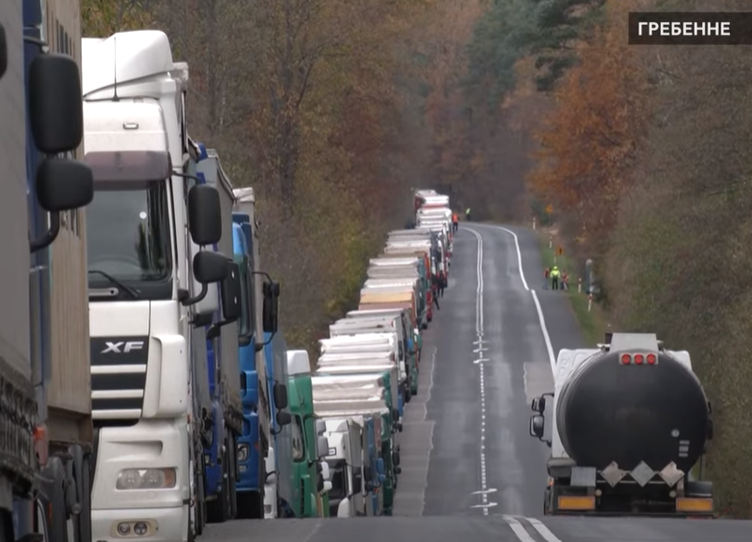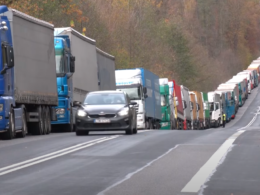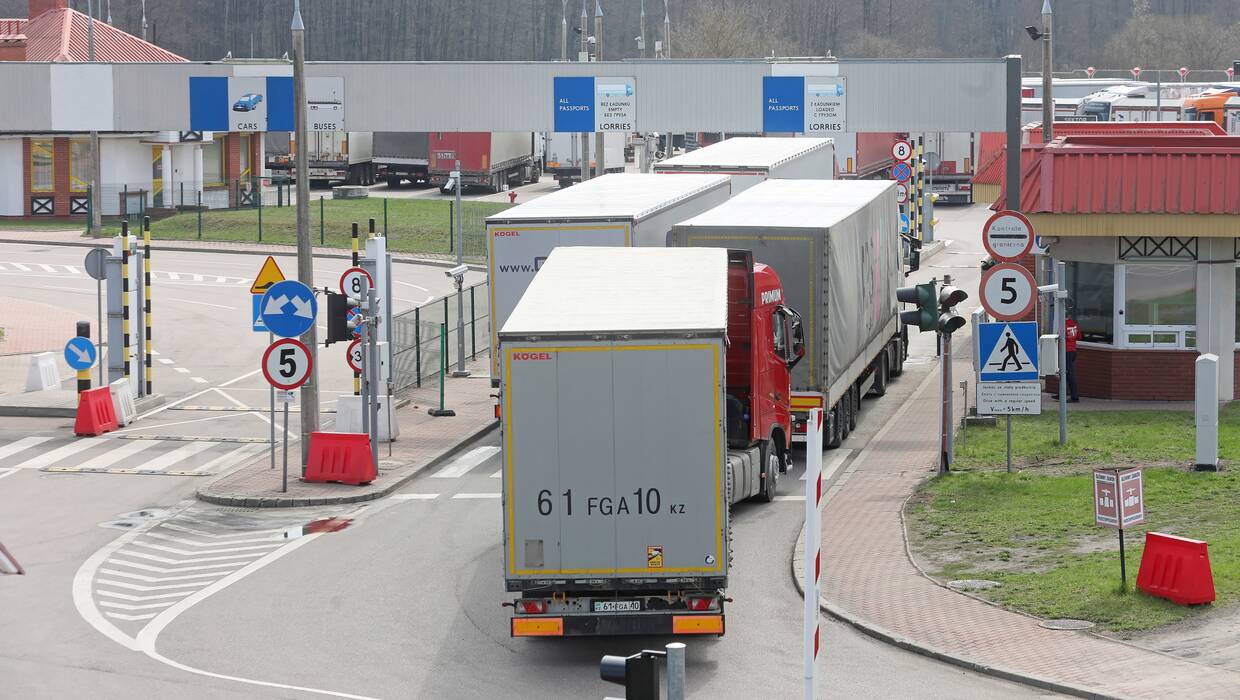- Opening the "Uhryniv - Dołhobyczów" border crossing point for empty trucks to pass through;
- Creating separate passes in the "eCherha" system for empty transport at the "Yahodyn - Dorohusk" and “Krakivets - Korczowa” border crossing points;
- Launching a one-month pilot registration in "eQueue" directly before crossing the border at the “Nyzhankovychi - Malhowice” crossing point.
- On 31 October, a major protest by Polish truck drivers threatened to shut down all border crossings between Poland and Ukraine starting on November 3rd, which marked the beginning of the border blockade crisis.
- On 6 November, dozens of Polish truck drivers blocked three border crossings with Ukraine, and expanded it to a fourth crossing. The Polish protesters demanded the return of permits for Ukrainian carriers, tougher EU transportation requirements, prohibiting non-EU company registration, access to Ukraine's Shlyakh system for eligible drivers, separate border queues for EU cars in eCherha, and dedicated lanes for empty vehicles.
- On 14 November, talks between Ukraine and Poland at the countries' border failed to resolve the strike, and four days later, nearly 3,000 trucks had congested at the Polish-Ukrainian border.
- The organizers of the Polish trucker strike at the Ukrainian border had close ties to Russia and supported Russia's occupation of Crimea.
- The protest claimed its first casualty on 22 November, when a 56-year-old Ukrainian truck driver who was waiting to cross the border into Ukraine died.
- On 27 November, Poland presented Ukraine with carrier demands: implementation of commercial permits for Ukrainian companies, except those transporting humanitarian/military goods, plus suspension and verification of licenses for companies opened after the Ukraine war outbreak.
- The Russian trace in the Polish trucker border blockade
- Border blockade by Polish drivers “damaging for all,” Ukrainians say




